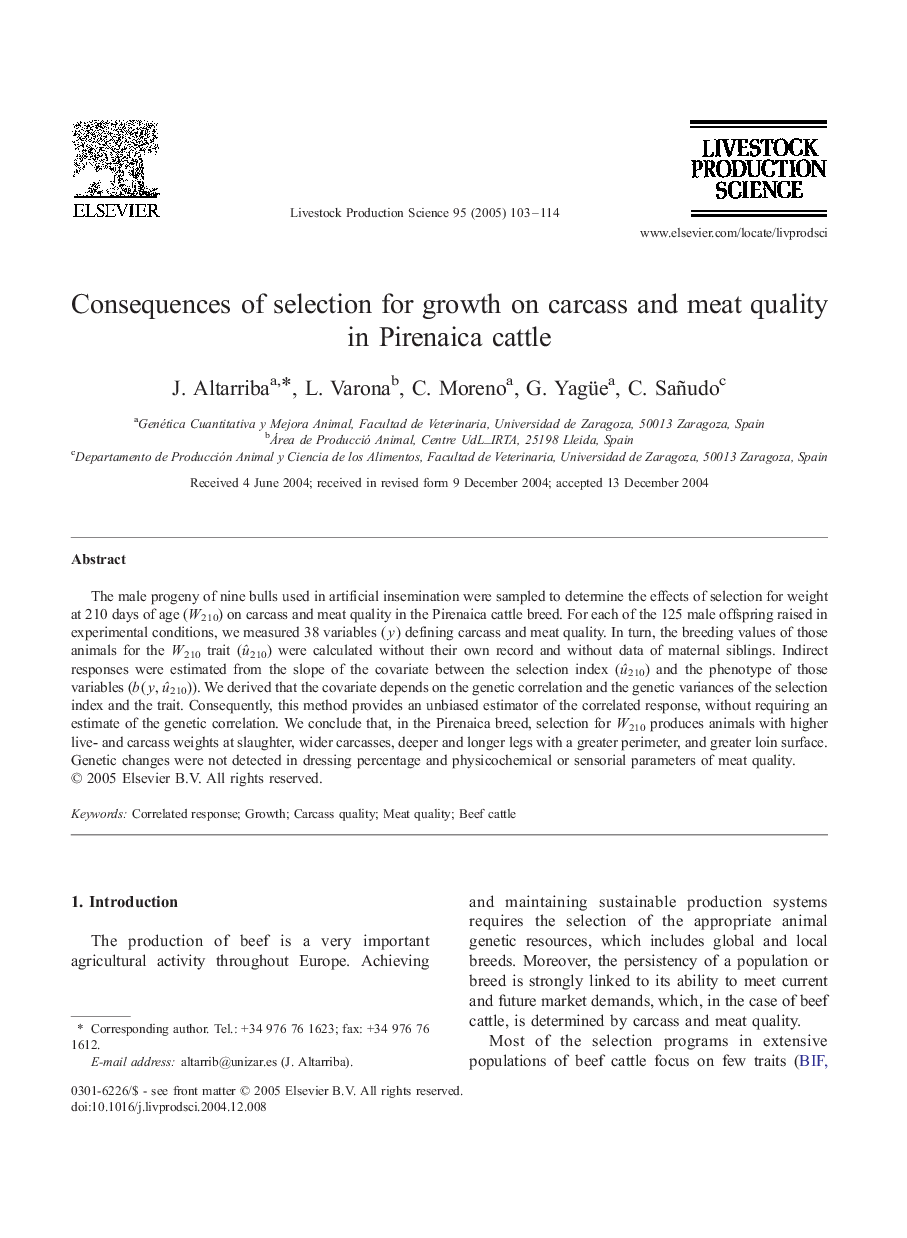| Article ID | Journal | Published Year | Pages | File Type |
|---|---|---|---|---|
| 8982697 | Livestock Production Science | 2005 | 12 Pages |
Abstract
The male progeny of nine bulls used in artificial insemination were sampled to determine the effects of selection for weight at 210 days of age (W210) on carcass and meat quality in the Pirenaica cattle breed. For each of the 125 male offspring raised in experimental conditions, we measured 38 variables (y) defining carcass and meat quality. In turn, the breeding values of those animals for the W210 trait (û210) were calculated without their own record and without data of maternal siblings. Indirect responses were estimated from the slope of the covariate between the selection index (û210) and the phenotype of those variables (b(y, û210)). We derived that the covariate depends on the genetic correlation and the genetic variances of the selection index and the trait. Consequently, this method provides an unbiased estimator of the correlated response, without requiring an estimate of the genetic correlation. We conclude that, in the Pirenaica breed, selection for W210 produces animals with higher live- and carcass weights at slaughter, wider carcasses, deeper and longer legs with a greater perimeter, and greater loin surface. Genetic changes were not detected in dressing percentage and physicochemical or sensorial parameters of meat quality.
Related Topics
Life Sciences
Agricultural and Biological Sciences
Animal Science and Zoology
Authors
J. Altarriba, L. Varona, C. Moreno, G. Yagüe, C. Sañudo,
